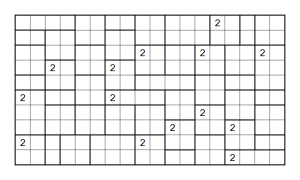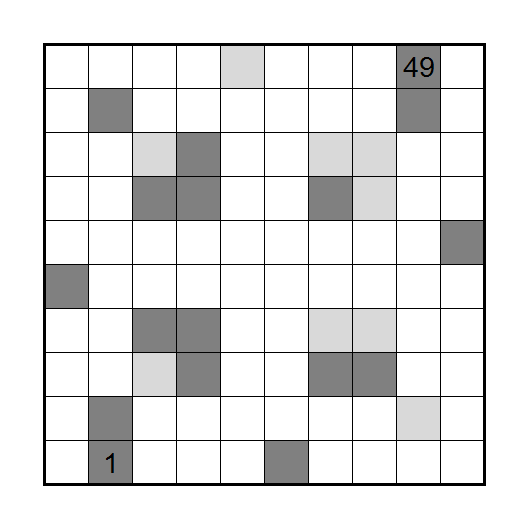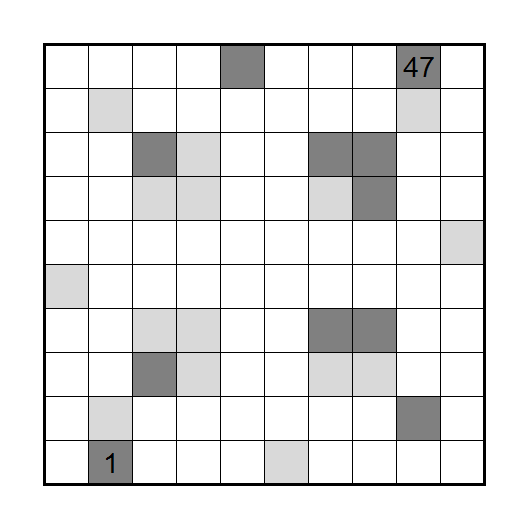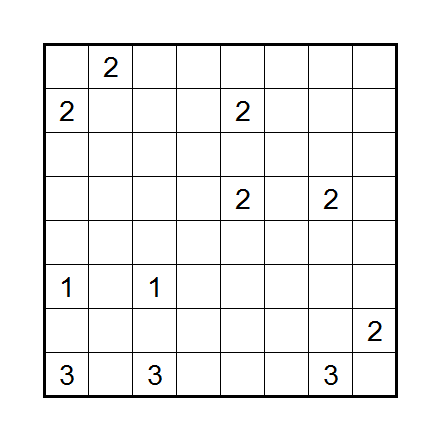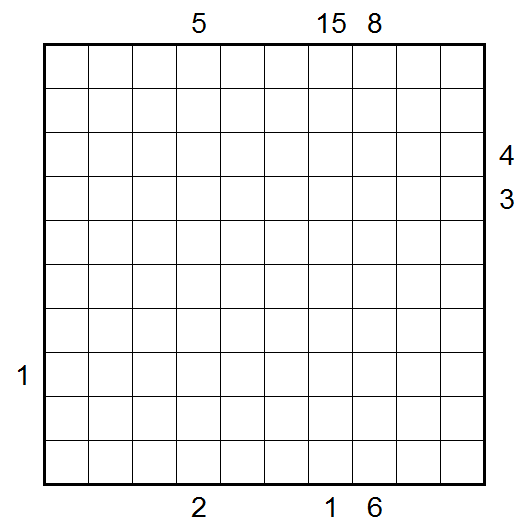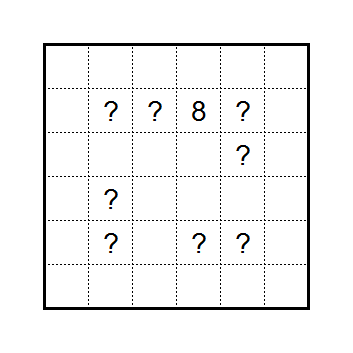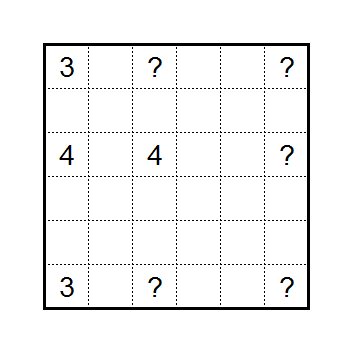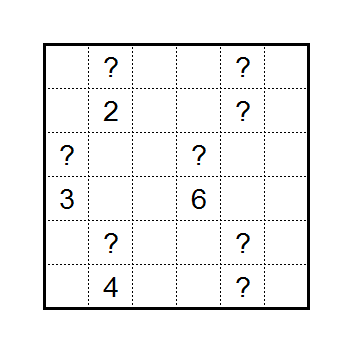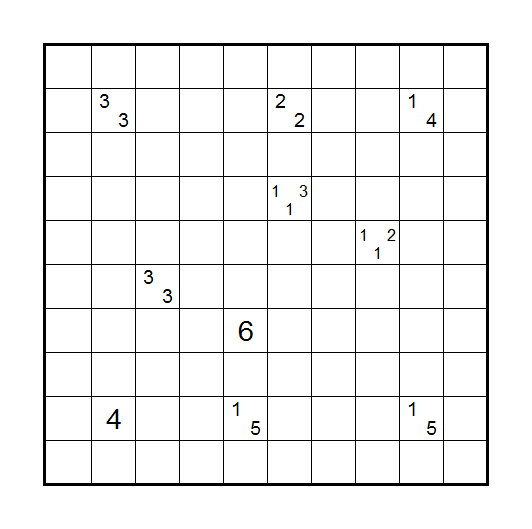I’m not sure if today’s puzzle enritely qualifies as a double, since one puzzle uses numbers while the other doesn’t.
TSLI is a LITS variant. TSLI is to LITS as Pata is to Tapa, hence the naming.
I actually made the TSLI first, and as an afterthought decided to make a Heyawake with the same grid. It’s the first Heyawake I’ve made, and considering how much trouble I have solving Heyawakes, it turned out surprisingly good.
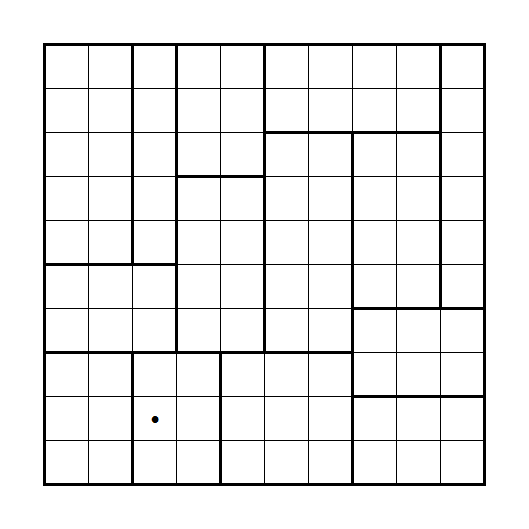
TSLI rules:
- Shade some cells to form a continuous wall that contains no 2×2 squares of shaded cells.
- Each region contains exactly four unshaded cells, and they must form an L, I, T or S tetromino. Tetrominoes of the same shape may not share an edge.
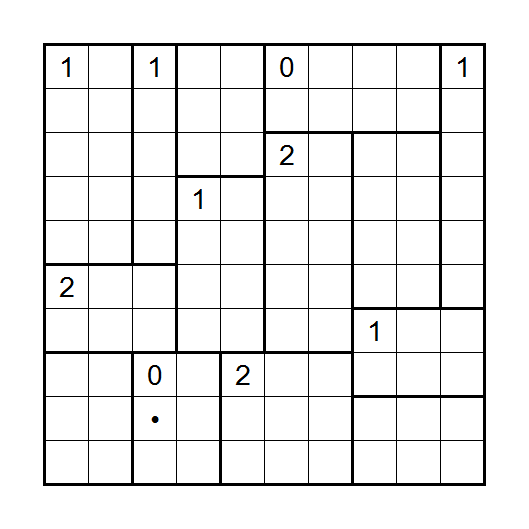
Heyawake rules:
- A region’s clue tells exactly how many shaded cells it contains. Unclued regions may have any number of shaded cells (including zero).
- Two shaded cells may not share an edge.
- The unshaded cells must form a single, continuous polyomino.
- No continuous line of unshaded cells may pass over two or more region borders.
- To clarify the last rule, the scenario below is illegal, but the one below it legal.
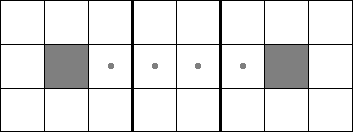
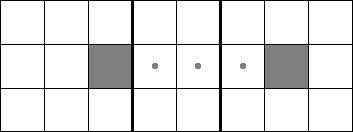
EDIT: Turns out both puzzles were broken, both had slight ambiguities. That’s what happens when I make puzzles while delirious with fever, and have no test-solvers to boot…
The fix isn’t elegant, but I like the rest of the TSLI too much to completely retool the lower left corner. The Heyawake was reclued too.
(The dot means that the cell is unshaded.)
Posted in LITS, Puzzle by ArDeeJ, 07/19/14 6:23 PM
7 Comments »
